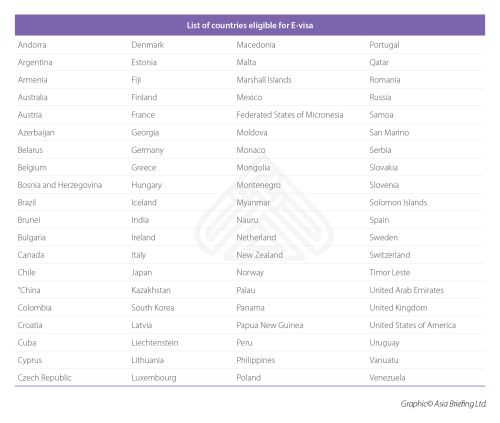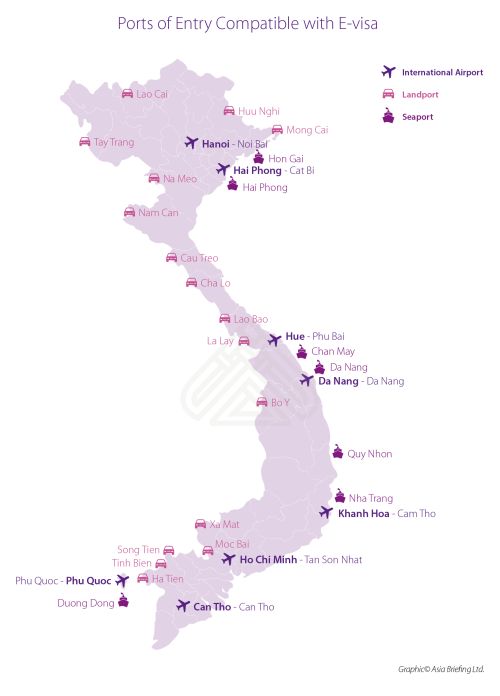Vietnam's pilot e-visa program has been extended for another two years and expanded so that tourists from 80 countries can participate. Vietnam Briefing explains who is eligible and what you need to know to travel to Vietnam on an e-visa.
Vietnam recently extended its electronic visa (e-visa) policy until February 2021 and expanded the list of countries that are eligible to participate. An e-visa is typically applied for online, linked to a passport number, and stored on a computer – with no stamp or label delivered before travel.
On February 1, the government issued Decree no 17/2019/ND-CP, extending the pilot project launched in January 2017 and adding more countries to the list, bringing the total number to 80. The e-visa program is applicable for a single entry and valid for a maximum of 30 days.
Official data showed that until the end of August 2018 more than 240,000 foreigners entered Vietnam using the e-visa program. The government wants to expand on this success to reinvigorate the tourism industry by 2025.
Statistics show that Vietnam could attract up to 32 million foreign travelers which could contribute 10 percent to the country's GDP. By 2025, tourism is expected to create six million jobs, including two million direct ones.
The full list of countries eligible for an e-visa can be found below.

How to apply for Vietnamese e-visas
Before applying, the candidate must have prepared a scanned copy of one's valid passport details as well as a scanned passport photo. It is important to note that the scanned passport photo being sent must have the applicant looking directly at the camera without a smile.
Once the appropriate materials have been gathered, the applicant must go to the following link and proceed with the following steps:
- Click on "For foreigners";
- Upload the passport details and passport photo files. It is important to note that both files must be uploaded separately;
- Fill in all the required information;
- Pay the US$25 application fee and submit the application (this fee is non-refundable, even if the application is denied);
- Once successfully submitted, the applicant will receive a registration code, which can be used to check on the status of the application;
- Wait the standard 3 to 5 business days and return to the website to find out if the application has been approved; and
- If approval has been granted, print out the e-visa as proof for travel.
Once you arrive in Vietnam, immigration authorities may ask to submit or check the following documents:
- Two photos with 4×6 cm dimensions;
- Electronic record code;
- Hotel booking;
- Round trip air tickets; and
- Passport valid for six months.
The full list of ports that allow entry or exit by e-visa is below.

One important thing to note is that that the applicant can enter only from the port of entry chosen in their e-visa application. Once the visa is issued, the traveler cannot switch the point of entry.
Applying for the e-visa does take longer than its Visa on Arrival counterpart. The application generally requires three business days, as opposed to the Visa on Arrival, which can be done in two days or less.
Applicants may also use a third party to facilitate the Visa on Arrival application as such agencies also assist in paperwork, payments, and airport pickups.
Note: This article was first published in March 2017 and has been updated to include the recent changes to the e-visa program.
The content of this article is intended to provide a general guide to the subject matter. Specialist advice should be sought about your specific circumstances.
